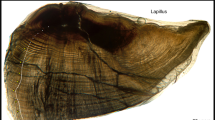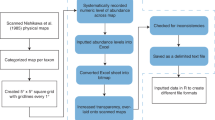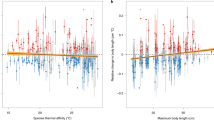Abstract
To my doubts as to the truth of Dr. Hjort's theories of the herring's age, Dr. Hjort and Mr. Einar Lea have now replied (NATURE, November 5) by recapitulating their main arguments. I can do little more than reiterate my own unaltered incredulity. My position is simply this, that a theory has been put forward which seems to me, a priori, extremely improbable, and that the statistical data on which it is based are, to my mind, not strong enough to support it. The large assertion that the Norwegian spring herring have consisted, in preponderating or overwhelming proportion, year by year from 1908 to 1913, of fish spawned in 1904, 15 based (so far as I can discover) on only nineteen samples, or little more than two a year, averaging somewhat above 300 herring each. Dr. Hjort and Mr. Lea have no difficulty in showing that their 1913 herring, grouped according to scale-rings or alleged years of growth, form a curve which is a bad fit to a probability curve; but they do not remind us that this so-called sample is no sample at all, but is a conglomeration of three separate samples from far-distant localities. Dr. Hjort's full data have not been published, so far as I know, for the years since 1909; let us try to discover how, for the year 1908, he arrives at the figure 3.48, which he gives (cf. NATURE, August 27, p. 672) as the percentage proportion, in the entire stock of Norwegian spring herring, of fish spawned (according to the evidence of their scalerings) in 1904. I find that this determination was based on two samples only,1 from different localities, one consisting of 881 fish, the other of 549. In the former sample the percentage of 1904 fish is given as 15.9, in the latter as 65.2. The former determination, by Mr. K. Dahl, seems a little shaky: for an independent determination of a part of the same sample, by Mr. Einar Lea,2 gave the alternative value of 10.2. But be that as it may, I find that Dr. Hjort's result is obtained by the simple method of adding together the two samples, one of 881 fish showing 15.9 per cent., the other of 549 fish showing 65.2 per cent., and so the resulting mean value of 34.8 per cent., decimal and all, is straightway arrived at. It does not need the eye of a mathematician to see that, in a problem of biological statistics, such a method of calculation is inadequate; and that it neither proves nor even renders probable the conclusion drawn from it, namely, that four-ringed herring (whatever those four rings may mean) constituted 34.8 per cent. of all the spring herring in Norway, in the year in question.
Similar content being viewed by others
Article PDF
Rights and permissions
About this article
Cite this article
THOMPSON, D. The Age of a Herring. Nature 94, 363 (1914). https://doi.org/10.1038/094363b0
Issue Date:
DOI: https://doi.org/10.1038/094363b0
Comments
By submitting a comment you agree to abide by our Terms and Community Guidelines. If you find something abusive or that does not comply with our terms or guidelines please flag it as inappropriate.



